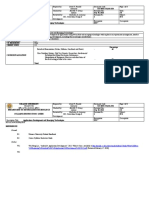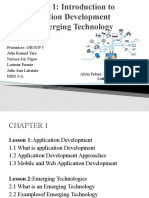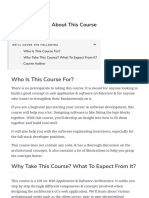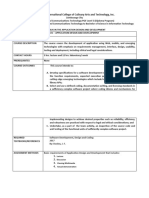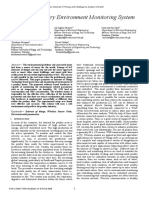0% found this document useful (0 votes)
37 views6 pagesSyllabus - Application Development and Emerging Tools
The syllabus outlines a 3-credit course on Application Development and Emerging Tools, focusing on software development principles, methodologies, and hands-on projects involving modern technologies like AI, IoT, and cloud computing. Students will learn to design user interfaces, develop applications, and work collaboratively on projects. Assessment includes quizzes, labs, group projects, and class participation, with required readings from notable texts in technology.
Uploaded by
Angelo FelicianoCopyright
© © All Rights Reserved
We take content rights seriously. If you suspect this is your content, claim it here.
Available Formats
Download as PDF, TXT or read online on Scribd
0% found this document useful (0 votes)
37 views6 pagesSyllabus - Application Development and Emerging Tools
The syllabus outlines a 3-credit course on Application Development and Emerging Tools, focusing on software development principles, methodologies, and hands-on projects involving modern technologies like AI, IoT, and cloud computing. Students will learn to design user interfaces, develop applications, and work collaboratively on projects. Assessment includes quizzes, labs, group projects, and class participation, with required readings from notable texts in technology.
Uploaded by
Angelo FelicianoCopyright
© © All Rights Reserved
We take content rights seriously. If you suspect this is your content, claim it here.
Available Formats
Download as PDF, TXT or read online on Scribd
/ 6













